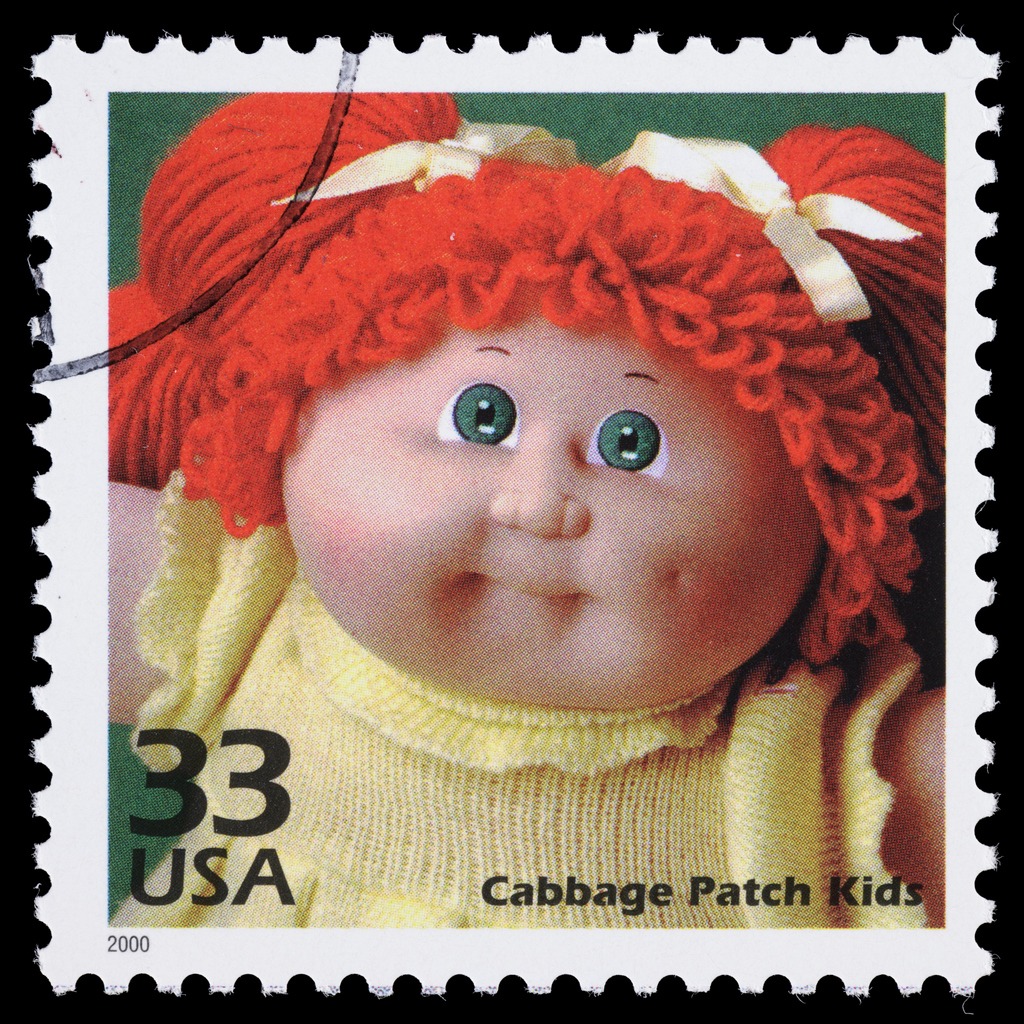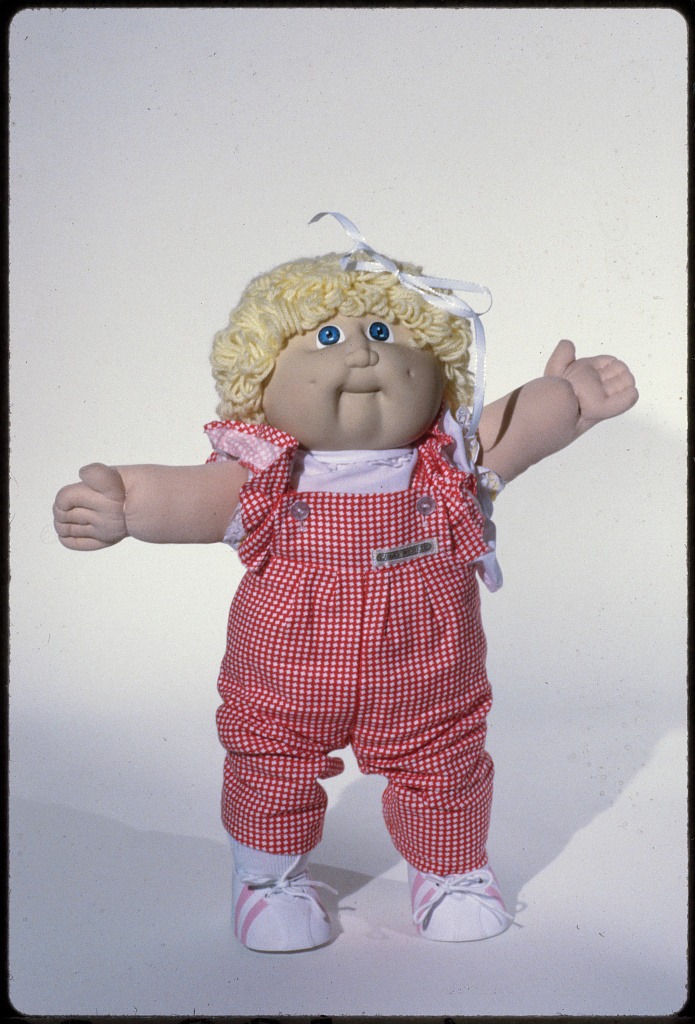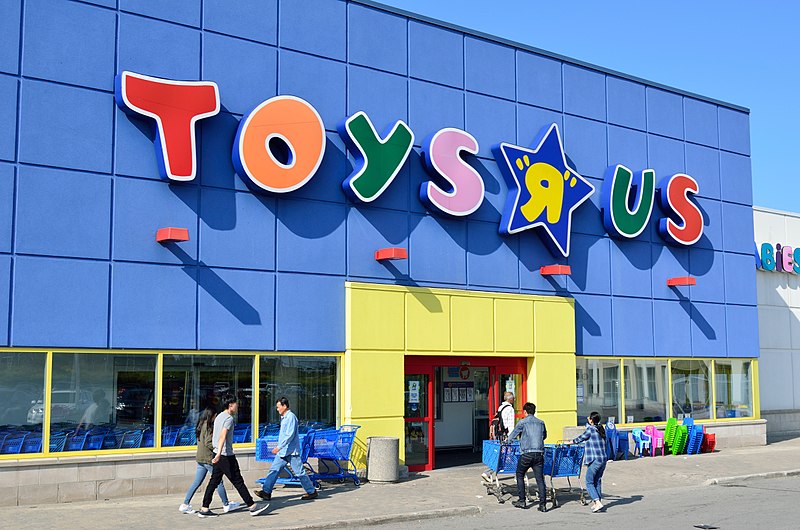There have been numerous dolls that have become popular over the years, but only a few have truly stood the test of time and remained as one of the best-selling toys of all time despite being released decades ago. One of these classic toys is the Cabbage Patch Kids, a line of cloth dolls that was first produced in 1982 by Coleco, a toy company that is notable for manufacturing the ColecoVision video game console. To know more about these cloth dolls, here are the interesting origins of Cabbage Patch Kids.
The Predecessors of Cabbage Patch Kids
Before the creation of the Cabbage Patch Kids, there were already baby-sized dolls that had been designed and sold (although in limited quantities). One of these baby-sized dolls is the Doll Babies line which was developed by folk artist Martha Nelson Thomas. [1] What’s interesting about the Doll Babies is that they came with birth certificates and adoption papers to make children feel like they have adopted a brother, a sister, or their own child.
Xavier Roberts, a then-21-year-old art student in North Georgia, saw the Doll Babies and became inspired to create his own version of baby-sized dolls. With the assistance of an artist named Debbie Moorhead, Roberts was able to create hand-stitched dolls called “The Little People.” Much like Nelson’s Doll Babies, Roberts’s The Little People came with a birth certificate and adoption papers. Roberts told his customers that The Little People dolls were not for sale, but they are “for adoption.” The adoption costs for the dolls can range from $60 to $1,000.
These Little People dolls were sold at arts and crafts shows and stalls first before eventually being sold at the Babyland General Hospital, a medical clinic In Cleveland, Georgia that was converted into a toy store by Roberts and a couple of his friends.
The Creation of Cabbage Patch Kids
In 1981, which was the year when The Little People became a successful toy line, Xavier Roberts was approached by a licensing agent and toy designer named Roger L. Schlaifer about the possibility of licensing The Little People so that it can be sold worldwide. Roberts agreed, and Schlaifer changed the name of The Little People to “Cabbage Patch Kids” to make the name less generic and more unique. [2]
To attract a company that would be willing to produce the dolls, Schlaifer and his wife wrote a story titled “Legend of the Cabbage Patch Kids” that explained how unique cabbages give birth to the dolls. Before the publication of the story, Schlaifer pitched it first to Roberts, who wanted to be a character in the story. So, Schlaifer added Roberts as a ten-year-old boy who discovered the magical Cabbage Patch where the dolls are born. In order to save the dolls from being abducted by nefarious characters like Lavender McDade to work in gold mines, Roberts worked hard to find parents for the dolls so that they will remain safe and loved.
Coleco and the Cabbage Patch Kids
In the early 80s, Schlaifer contacted different major doll companies in the United States in the hope that at least one of them would be interested in producing the Cabbage Patch Kids. While many companies rejected the offer, there was one particular company that was intrigued with the dolls, and this was Coleco. The said company agreed to become the licensee of Cabbage Patch Kids with an advertising guarantee.
Coleco produced the Cabbage Patch Kids dolls in their factories in China, and after the release of the dolls in 1982, they became one of the best-selling toys in the said year. It was reported that the Cabbage Patch Kids brand helped Coleco generate more than $2 billion in retail sales by 1984. In order to keep up with the demand, Coleco canceled its advertising campaign in order to focus more on producing bigger batches of Cabbage Patch Kids dolls.
Unfortunately, in 1986, Coleco got caught up in a legal battle with Robert and Schlaifer over the pair’s introduction of another toy line called “Furskins Bears,” which served as a competitor to the Cabbage Patch Kids. In the same year, the sales of Cabbage Patch Kids plummeted and Coleco was unable to recover, as they went out of business by 1988.
If you want to get a Cabbage Patch Kids doll that has similar designs to the original version, check out the two products below:
- Cabbage Patch Kids Classic Doll – Brunette/Brown Eyes
- Cabbage Patch Kids Classic Doll – Blonde/Blue Eyes
Hasbro’s Cabbage Patch Kids
After Coleco filed for Chapter 11 bankruptcy, Hasbro, a big toy company in the US, bought the license to produce the Cabbage Patch Kids dolls. [3] Under Hasbro, the Cabbage Patch Kids dolls were expanded to include variants like “Birthday Kids” and “Pretty Crimp and Curl.” There were also dolls that played different instruments like kazoos. For the toy line’s 10th anniversary, Hasbro re-released the original version of the Cabbage Patch Kids that includes the original packaging designed by Roger L. Schlaifer.
Mattel’s Cabbage Patch Kids
In 1994, Mattel (a company known for creating the Barbie doll) got a hold of the licensing rights to manufacture Cabbage Patch Kids. Mattel’s version of the Cabbage Patch Kids dolls hit store shelves in 1995. The Mattel version of Cabbage Patch Kids was not just dolls that have cloth bodies, as there were also variants that have bodies made from vinyl, which is a much more durable material.
Cabbage Patch Kids by Toys “R” Us
Mattel’s Cabbage Patch Kids began to decline in terms of sales during the late 90s. So, in 2001 a former Coleco marketing employee named Al Kahn acquired the licensing rights for the dolls while also allowing toy store Toys “R” Us to produce two kinds of Cabbage Patch Kids dolls, namely the 20-inch kid’s dolls and the 18-inch baby dolls. These dolls come with cardboard cabbage leaf seat packaging to further emphasize that they came from special cabbages.
Unfortunately, the Toys “R” Us version of the Cabbage Patch Kids did not sell well because of how expensive it is compared to the previous version. In 2003, the license for the dolls would be picked up by Play Along Toys, who would also launch the Cabbage Patch Kids with its original packaging, as well as the doll’s original head sculpt.
Recent Happenings for the Cabbage Patch Kids Toy Line
In 2011, another toy company called Jakks Pacific acquired Play Along Toys and became the licensee of Cabbage Patch Kids dolls. It was Jakks Pacific who introduced the smaller 14-inch Cabbage Patch Kids Dolls that are under a new line called “Fashionality.” In 2013, Jakks Pacific launched the 30th Anniversary Collection of Cabbage Patch Kids that featured classic dolls. The said toy company would continue to produce Cabbage Patch Kids dolls until 2014 when Wicked Cool Toys acquired the license. As of 2023, Wicked Cool Toys still produce and sell Cabbage Patch Kids products.
Here are some of the most popular Cabbage Patch Kids dolls that Wicked Cool Toys has produced:
- Cabbage Patch Kids 9” Dance Time Girl
- Cabbage Patch Kids Cuties Collection Petunia the Pig
- Cabbage Patch Kids Cuties Collection Clara Cow
- Cabbage Patch Kids Splash N’ Float Tiny Newborn
- Cabbage Patch Kids Deluxe Tiny Newborn Sweet Treats
So, these are the origins and history of the Cabbage Patch Kids, from how they were developed up to which company is producing the dolls in recent years. If you haven’t had a Cabbage Patch Kids doll in your collection yet, getting one, especially the retro ones that have plenty of value, is worth it.
References
[1] Piro, L. (2015, April 22). The Not-So-Sweet Truth About Cabbage Patch Kids. Good Housekeeping. Retrieved July 6, 2023, from https://www.goodhousekeeping.com/life/a32201/cabbage-patch-dolls-history/
[2] Brozyna, E. (2022, July 19). What Happened to Cabbage Patch Kids, the Dolls That Caused a Huge Frenzy in the ‘80s? PureWow. Retrieved July 6, 2023, from https://www.purewow.com/entertainment/what-happened-to-cabbage-patch-kids
[3] L.A. Times Archives. (1989, June 16). $85-Million Deal : Coleco OKs Hasbro Buyout Offer. Los Angeles Times. Retrieved July 6, 2023, from https://www.latimes.com/archives/la-xpm-1989-06-16-fi-2178-story.html




